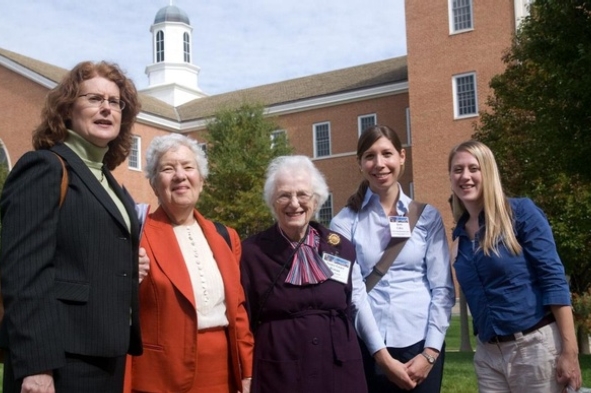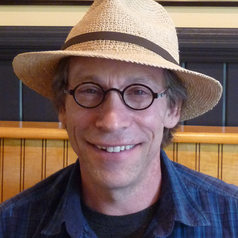Vera Rubin: 1928-2016

Christmas day seems to have special significance in the world of astronomy, not because of any stars above Bethlehem, but because great astronomers seem to begin life, or end it on that day. Isaac Newton was born in the Julian calendar on Dec 25, 1642, and another giant of astronomy, Vera Rubin, died yesterday, Christmas day 2016, at age 88, after a career in which, against a plethora of odds, she changed the way we think about the Universe.
Rubin studied astronomy as an undergraduate at Vassar and wanted to enroll into graduate school in Princeton, but women weren’t allowed into the graduate astronomy program until 1975, something that is truly remarkable, and despicable, given the important role women have played in astronomy in the past century. After completing a master’s degree in physics at Cornell, where she studied with giants like Richard Feynman and Hans Bethe, and also with the brilliant and poetic Philip Morrison, she moved to Georgetown University, where she completed her Ph.D. in 1954 under another physics wunderkind, George Gamow. During that time she took her classes at night, while her husband waited in the car because she didn’t know how to drive.
Her early research involved the motion of galaxies, demonstrating that addition to their uniform recession due to the Hubble expansion of the Universe, most galaxies have small peculiar motions that are due to their gravitational clumping into clusters. During this time she helped support her family, raising 4 children while teaching part time at Montgomery County community college and at Georgetown, eventually joining the faculty at Georgetown in 1962. She achieved enough recognition during this period to be the first woman allowed to use the instruments at Palomar Observatory, in 1965, and in that year she moved to the Department of Terrestrial Magnetism at the Carnegie Institution in Washington, where she remained for the rest of her career.
Rubin’s biggest breakthrough occurred a few years later, when she joined collaborator Kent Ford—with whom she had earlier collaborated on the studying the relative motion of the Milky Way galaxy compared to a large sample of distant galaxies, suggesting that the Milky had a significant velocity relative to the background Hubble flow—in the study of the motion of stars and gas in the nearby Andromeda Galaxy. Five years after joining the DTM Rubin and Ford reported that the rotation of Andromeda was anomalous. Its outskirts were rotating so fast that it should have flown apart, if the only mass holding it together was the matter that was visible to telescopes.
Almost 40 years earlier the astronomer Fritz Zwicky had observed anomalous local motions within the distant Coma cluster that also suggested more mass in that system than could be accounted for by visible matter, but the results were discounted at the time.
Contemporaneously with Rubin and Ford’s observations of Andromeda, the Australian astronomer Ken Freeman observed a similar anomalous rotation of other spiral galaxies, again suggesting the presence of what is now known as dark matter. At the time these observations were quite controversial. I remember as an undergraduate student in the 1970’s hearing about Rubin’s work, but accompanying those discussions were caveats about the difficulties associated with systematic effects in astronomy that could cloud conclusions.
Nevertheless, Rubin worked tirelessly, along with Ford and other collaborators, over the years, to confirm these results, not just in Andromeda, but also in our own Milky Way galaxy. By the late 1970’s, by which time I had entered graduate school, dark matter had begun to achieve wide acceptance, and by the 1980’s the existence of dark matter dominated cosmological model building, ultimately influencing both the fields of astronomy and particle physics. In the intervening period, not only has the existence of dark matter been confirmed in almost all large scale astronomical systems, but its nature has been probed by precise observations of the Cosmic Microwave Background Radiation (CMBR), which not only constrain the amount of dark matter, but also the fact that it is not made up of the constituents of normal matter—protons and neutrons. This fact plays a vital role in our understanding of galaxy formation, as without being able to quickly collapse into the potential wells established early on by dark matter, there would not have been sufficient time for the small fluctuations observed in the CMBR to grow sufficiently, via gravity, to form visible galaxies today.
Get the Space.com Newsletter
Breaking space news, the latest updates on rocket launches, skywatching events and more!
For her work, Rubin received a host of awards, including being only the second woman, after Caroline Herschel in 1828, to receive the Gold Medal of the Royal Astronomical Society. She was a member of the US National Academy of Sciences and received the National Medal of Science in 1993 for her pioneering work on dark matter. But more than this, Vera Rubin was a wonderful mentor for young scientists. She was warm and eager to help anyone who sought her out. I remember in the 1980’s as a young Assistant Professor at Yale, when I needed to obtain some figures for a book I was writing on dark matter, contacting her out of the blue, and receiving warm encouragement, and the figures, a few days later.
Throughout her career Rubin served as vibrant role model for young women, encouraging young girls to enter astronomy and study the universe, and working within professional organizations to ensure equity for women scientists. But she was not defined by, nor will she be remembered for, her gender, but by her remarkable contributions as a scientist. As she once wrote: “…my numbers mean more to me than my name. If astronomers are still using my data years from now, that’s my greatest compliment.”
Lawrence M. Krauss is Foundation Professor and Director of the Origins Project at Arizona State University. A theoretical physicist and cosmologist he is also the author of numerous bestselling books, including “A Universe from Nothing.” His newest book is entitled “The Greatest Story Ever Told…So Far: Why Are we Here?.”
This story was provided by Scientific American.
Join our Space Forums to keep talking space on the latest missions, night sky and more! And if you have a news tip, correction or comment, let us know at: community@space.com.

Lawrence M. Krauss is an internationally known theoretical physicist whose research covers science from the beginning of the universe to the end of the universe. His research interests include the interface between elementary particle physics and cosmology, the nature of dark matter, general relativity and neutrino astrophysics. He has investigated questions ranging from the nature of exploding stars to issues of the origin of all mass in the universe. Krauss is the author of many scientific publications, as well as several acclaimed popular books, including, "The Fifth Essence", "Fear of Physics", and "The Physics of Star Trek."









